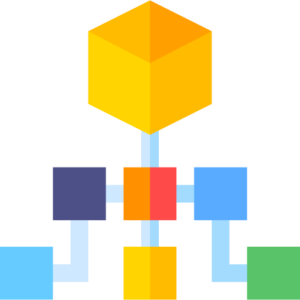How to become java Developer in 2024?
what Skills are required?
Salaries of java developer?
How much time taken to learn full stack java in 2024?
What are the top Companies To Hire java Developers?

What Does a Java Full Stack Developer Do?
In the fast-evolving tech landscape, the role of a Java Full Stack Developer in 2024 , 2025 Upcoming future has become increasingly important. These professionals are adept at both front-end and back-end development, making them invaluable to software development teams. Here’s a closer look at what a Java Full Stack Developer does, the skills required, and why they are crucial to modern web development.Read More
Let Us Understanding Full Stack Development,
A Full Stack Developer is a versatile programmer who can work on both the client side (front-end) and server side (back-end) of web applications. When it comes to Java Full Stack Development, the developer typically uses Java and related technologies for back-end development, along with various front-end frameworks.
Key Responsibilities
Front-End Development:
Java Full Stack Developers are proficient in HTML, CSS, and JavaScript frameworks (like Angular, React, or Vue.js).
They create user interfaces that are visually appealing and user-friendly, ensuring a seamless experience for users.
Back-End Development:
They build server-side logic using Java and frameworks like Spring or Hibernate.
They handle database management with technologies such as MySQL, Oracle, or MongoDB, ensuring data is stored, retrieved, and manipulated efficiently.
API Development:
Java Full Stack Developers design and implement RESTful APIs that allow front-end applications to communicate with back-end services.
Deployment and Maintenance:
They are involved in deploying applications on cloud platforms (like AWS or Azure) and managing server environments.
Regular maintenance and updates are also part of their role, ensuring the application runs smoothly and securely.
Collaboration and Communication:
Full Stack Developers often work in Agile teams, collaborating with other developers, UX/UI designers, and project managers.
Effective communication skills are essential for discussing project requirements, providing updates, and addressing issues.
Essential Skills:
Front end:
 1.HTML
1.HTML
 2.CSS
2.CSS
 3.JAVASRIPT
3.JAVASRIPT
 4.REACT JS
4.REACT JS
5.MONGO DB
Backend Technologies
 1.Core java
1.Core java
2.Advanced java
3.Spring Boot
 4.Data structures and algorithms
4.Data structures and algorithms
 5.SQL
5.SQL
Salary Of Java Developers In India Both Jr & Sr Position
In India, the average salary for a Java full stack developer is around ₹5,00,000 per year,
For Junior Java Developer ₹4L–₹11L/yr.
For Senior Java Developer ₹5L–₹17L/yr.
How Ever salary depends on candidate skills and previous experience
Here are some companies that pay well for Java developers in India According to data:
Standard Chartered Bank: Pays a lead Java developer around ₹23,81,667 per year
Amdocs: Pays a lead Java developer around ₹28–34 lakhs per year
Infobahn Softworld: Pays a lead Java developer around ₹27–32 lakhs per year
AKKODIS: Pays a lead Java developer around ₹24–29 lakhs per year
Synechron: Pays a lead Java developer around ₹15–23 lakhs per year
Collabera: Pays a lead Java developer around ₹18–21 lakhs per year
How much time will it take to learn Java full stack developer?
Well To Answer This Question it depends on several Factors:
. Background Knowledge
Complete Beginner: If you have no programming experience, expect to spend 6 to 12 months on foundational concepts (Java basics, web development principles, etc.).
Some Experience: If you have prior knowledge in programming or web development, you might need 3 to 6 months to become proficient in Full Stack Java.
2. Learning Path Breakdown
Java Fundamentals: 1-2 monthsFocus on syntax, object-oriented programming, and basic libraries.
Front-End Technologies: 1-2 monthsLearn HTML, CSS, JavaScript, and a front-end framework (e.g., React, Angular).
Back-End Development: 1-2 monthsDive into Java frameworks like Spring Boot and database management (SQL/NoSQL).
APIs and Integration: 1 monthLearn to create and consume RESTful APIs.
Deployment and DevOps Basics: 1 monthUnderstand cloud platforms (AWS, Azure) and version control (Git).
3. Practical Experience
Projects: Building personal or open-source projects is crucial. Allocate 1-2 months for this, focusing on real-world applications that integrate both front-end and back-end skills.
Internships or Freelancing: Gaining experience through internships or freelance work can significantly enhance your learning and may take an additional few months.
4. Consistency and Practice
Learning is most effective with regular practice. Dedicating 10-15 hours per week can help you progress more quickly.
Conclusion
In summary, the overall timeline to learn Full Stack Java can range from 3 to 12 months, depending on your prior experience and the intensity of your study. The key is consistent practice and building real-world applications to solidify your skills. Stay updated with industry trends and continually learn even after you land your first job to remain competitive in the field.
hi